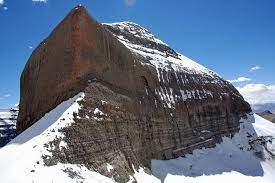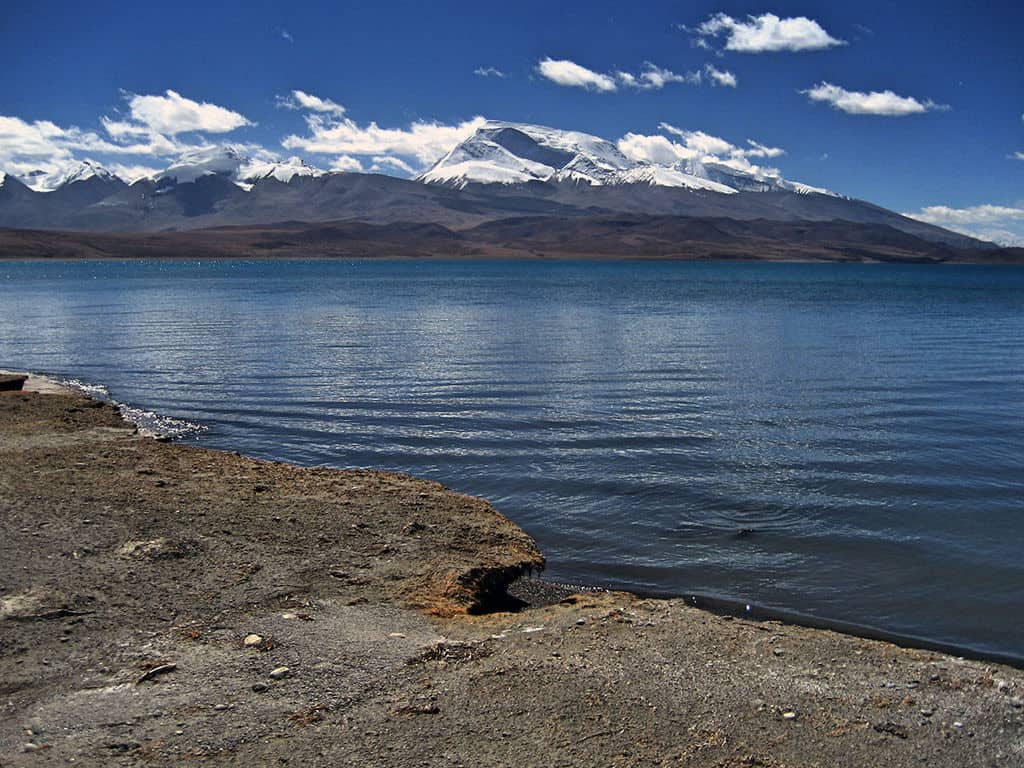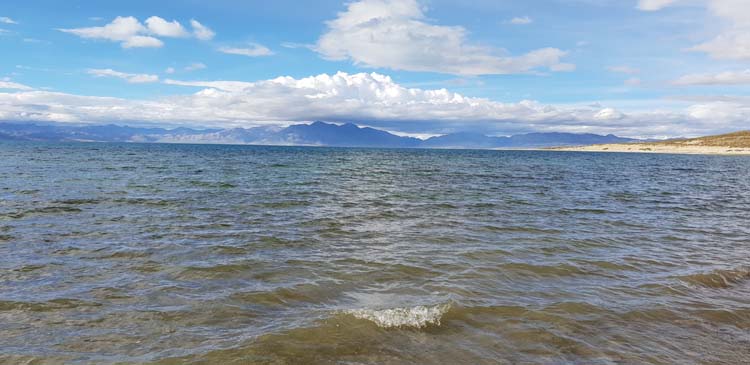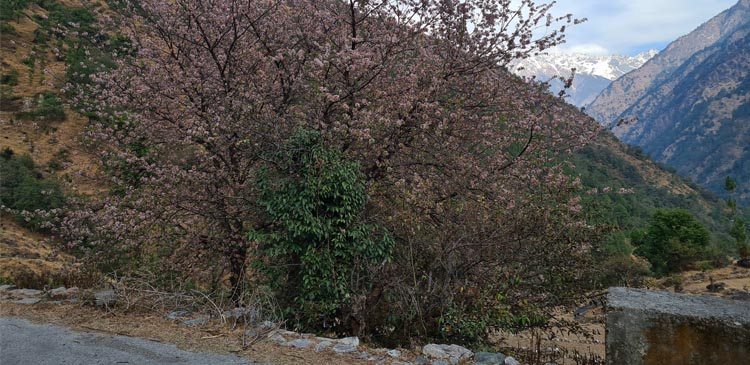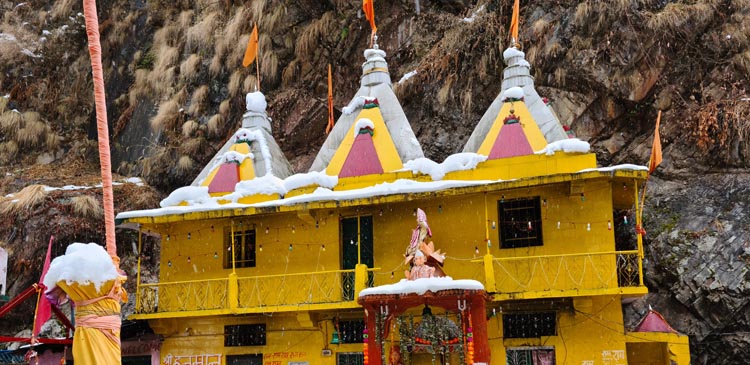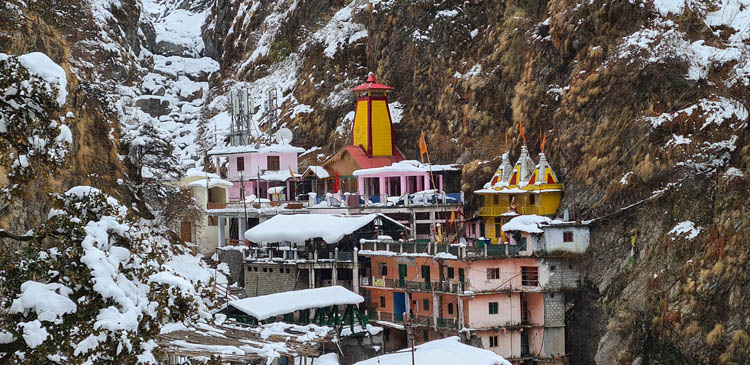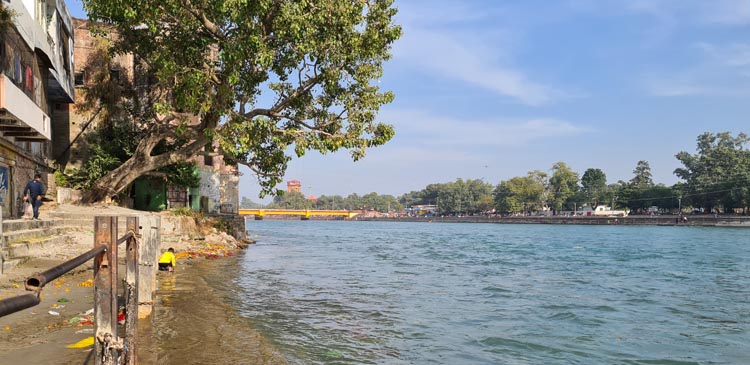We all know the Sacred Bull, Nandi, as the loyal, sacred carrier of Lord Shiva himself. It is believed that he exists in the guise of a hill, Nandi, near Mount Kailash, the holy abode of Lord Shiva. One of the most revered peaks, the Nandi Parvat also called Nandi Parbat, holds immense religious significance, wrapped with mythology and divinity. Tallest amongst all its neighbors, the Nandi Parbat is famous for its iconic bull shape, with its sides pointing towards different cardinal directions, making the symbol of “bull,” that is the Vahan Nandi. The Kailash Manasarovar Yatra is incomplete without a visit to the Nandi Parvat.
Where is Nandi Parvat Located?
Nandi Parvat stands as the gatekeeper of the path towards the holy abode of Lord Shiva, Mount Kailash. It is nestled just below the celestial steps of Mount Kailash’s south face. To its east lies two small yet beautiful lakes, a Buddha statue, and a Shiva Linga temple. The Saptarishi Caves also lies in close proximity to the Nandi Parvat location.
The Enchanting Mythology around Nandi Parvat
The Nandi Parvat gets its name from the legend of the sacred carrier bull – Nandi. According to Hindu mythology, Kashyapa and Surabhi’s son, Nandi, was destined to live only till the age of 8 years. On receiving this news, Nandi started worshipping Lord Shiva in the hopes of reversing his fate. Being impressed with the little boy’s dedication, Lord Shiva gave him a necklace and a magic bell that transformed Nandi into half-bull and half-human. The Lord also honored Nandi by declaring him as his Vahana or vehicle. Nandi soon became the provider of boons, a symbol of courage, faith, justice, and the protector of Dharma.
The Nandi Parvat location sits aptly with its name. It is believed that Lord Shiva is in deep meditation up at Mount Kailash. Being so far away, He cannot hear the common man’s prayer. Nandi acts as a messenger who passes all the messages to his Lord and protects his Lord’s gates. Situated in the foreground of Kailash, the Nandi Parbat is regarded as the “Gatekeeper.” Ardent devotees of Lord Shiva from all around the world perform the Nandi Parbat kora on their way up for the Kailash Manasarovar yatra.
The Nandi Parvat Kora
On their journey to witness the heavenly abode of Lord Shiva Mount Kailash, Devotees must pass through the process of Nandi Parvat inner kora. The kora site speaks of high divinity as it has various spiritual sites of gods and goddesses, along with the trekking or Nandi Inner Kora way.
The Nandi Parvat inner kora is generally done on the third day of the whole Kailash Yatra. There are high passes Nandi La and Khandosalgam La that bridges the gap between Mt. Kailash and Nandi Parvat. Devotees pass through these passes before they are finally returning to Darchen, the base point of the whole Kailash Parikrama.
Places to Visit Near Nandi Parbat
While the main attraction of the Nandi Parvat visit is to perform the Kailash Manasarovar parikrama, there are several places to visit during the yatra. Here are some of the most fascinating places to visit:
Lake Manasarovar: A part of the Kailash parikrama yatra, Lake Manasarovar is a holy lake near Nandi Parvat. Devotees believe that a dip in its holy water can wash off all the sins in one’s life. The lake is clipped at an altitude of 4,590 m above mean sea level in the far western Tibet’s Ngari Prefecture. Fed by the Kailash Glaciers, the lake has remained a popular pilgrimage site for thousands of years.
Yam Dwar: Like the Nandi Parvat, Yam Dwar is also an entry point of the holy abode. Located at Tarboche, Yam Dwar is also the starting point of the Kailash parikrama when you do the Outer Cora of Mount Kailash.
Rakshasa Tal: Near the Nandi Parvat lies the Rakshas Tal, popularly known as the “lake of the Demon.” It is located to the west of Mansarovar Lake, at an altitude of about 4, 752 meters. Its north-western tip is the originating point of the River Sutlej.
Saptarishi Caves: Close to the Nandi Parvat lies the Saptarishi caves, consisting of 13 Chortens. The aces are believed to be the residence of 7 Rishis, all of whom were ardent devotees of Lord Shiva. The caves lie at a height of 6, 000 meters altitude.
Best Time to Visit Nandi Parvat
The best time to visit the Nandi Parvat is from May to September. During this time, the weather remains calm and the sky clear, offering you a stunning view. During this time, you can also enjoy the Saga Dawa Festival, a Tibetan Buddhist Festival. You can also visit The Nandi Parvat around July and August. Though this is the monsoon time in Tibet, and your yatra will be accompanied by a little bit of fog and drizzle. The rain and fog do add to the glory of the scenic view of the region.
Safety Measures While Visiting Nandi Parvat
The Nandi Parvat trip is advised to those who are medically fit at the height of and have prior trekking experience. The region is quite rugged and situated at a high altitude. So, here are a few safety tips for you:
- Rest after every 15 minutes of trekking to Nandi Parbat.
- Drink lots of hot water.
- Do not talk much while trekking.
- Carry dry foods, first aid kits, and general medicines.
- Eat food that is rich in carbohydrates to avoid altitude sickness.
- Wear comfortable footwear fit for trekking.
- Wear your mask and carry sanitizers.
- Carry COVID-19 negative report and vaccination certificates.
- Maintain social distancing.
- Avoid consuming alcohol or smoking cigarettes during the trek to avoid dehydration.
FAQs for Nandi Parvat Travel
Q1. Can you carry or eat non-veg food during Nandi Parvat Trek?
A: Nandi Parvat is a holy territory for the Hindus, Buddhists, Jain, and many other religions. Thus, it is best to not carry or eat non-veg food during the Nandi Parvat trek.
Q2. Can you skip Nandi Parvat on Kailash Manasarovar yatra?
A: Since Nandi Parvat lies at the starting point of the Kailash yatra, you technically cannot ignore the Nandi Parvat. However, you can avoid the kora rituals.
Q3. Is Nandi Parvat Kora a part of Kailash Parikrama?
A: Yes, the Nandi inner kora is a part of the Kailash parikrama’s inner kora rituals.
Q1. Is the Nandi Parvat trek is challenging?
A: The Nandi Parvat trek can be challenging for a few travelers since you will have to trek through rugged mountain passes. This can be challenging. You should be ready both mentally and physically to embark on this journey.
